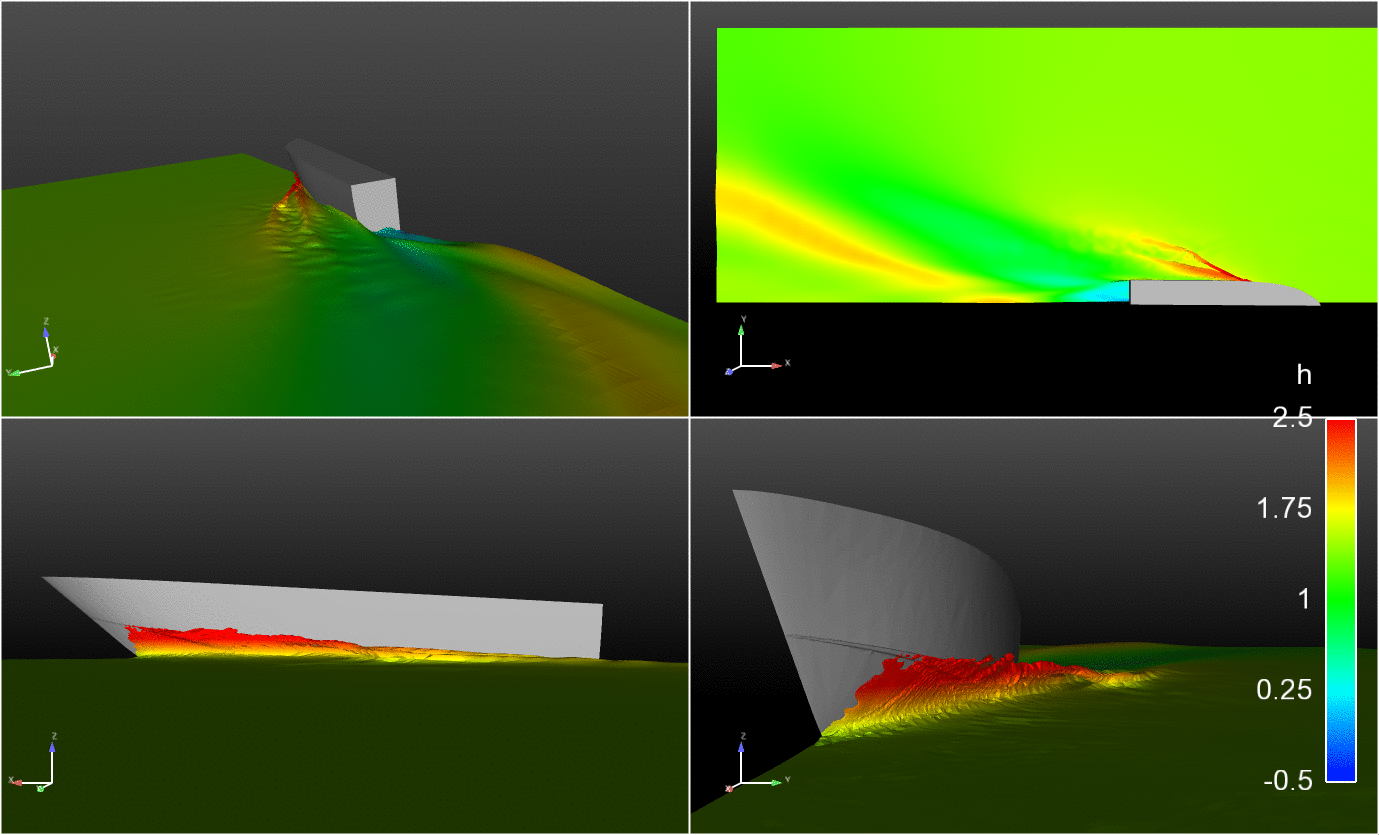Progettiamo la nautica del futuro!
Il Laboratorio NAVE concentra la propria attività sul supporto alle azioni innovative dei propri associati inerenti:
- Fluidodinamica computazionale (CFD)
- Calcolo strutturale con metodo ad elementi Finiti (FEM)
- Prototipazione e Stampa 3D
We design the ships of the future!
The ship laboratory supports innovative projects by its associates:
- Computational fluid dynamics
- Structural calculation using finite elements method
- 3D prototyping and printing
The laboratory can provide a wide range of opportunities to associates, such as:
- Specific assistance in the use of advanced digital simulation tools, both commercial and non-commercial, which are also made available through the HPC platform as software as a service.
- Research and development using open-source software application
The laboratory's priority is to produce patents and scientific publications, and to support graduate theses, in collaboration with the University of Genoa.
PUBLICATIONS
MARINE 2015 – “On the fluid dynamic design and optimization of sailing yacht hull and appendages using a complete open soure framework” (G.Bailardi, J.Guerrero)
Naval Architecture preserves both the sketching conceptualism and the engineering pragmatism. As a matter of fact, the heuristic approach behind a sailing yacht technology comes from a tangible amount of experience and knowledge. In this respect, Design and Analysis of Computer Experiments (DACE) represents an efficient tool for improving the overall knowledge on parameter dependency, while a Multi Objective Optimization easily reveal the best choice according to specific project constraints. In this work we propose a fully automated and parametric simulation framework, entirely based on Open Source technology. From an engineering and practical point of view, it is important to understand the real applicability of these tools on complex engineering tasks, such as evaluating the aero- and hydro-dynamic performance of sailing yachts. Due to its r eliability, scalability and cost effectiveness, the use of a simulation and optimization framework based on Open Source software represents an attractive option for engineers and designers looking for the best return-of-investment. In order to create the parametric geometry we use SALOME and OpenVSP, while mesh generation and fluid dynamics simulation are based on \OpenFOAM technology. The DACE optimization loop and the meta-models construction is done using DAKOTA.
NAV 2015 – “An Open Source Framework for CFD Optimization: the case of Sailing Yacht Daggerboards” (G.Bailardi)
Today, a large amount of Open Source software have been developed and from an engineering and practical point of view, it is important to understand the real applicability of these tools in performing and completing complex engineering tasks. In this work, the three-dimensional model to be studied, the domain discretization, the solution of the governing equations, and the data analytics have been performed entirely by using a simulation and numerical optimization framework based on Open Source technology. As parametric geometry modeler, the Open Vehicle Sketch Pad was employed, and for mesh generation we used the freely available CfMesh tool. The CFD simulations were carried out using OpenFOAM solver, while the numerical experiment and the subsequent Surrogate based Optimization was done by means of DAKOTA optimizer. For data post-processing and plotting we used Octave and Python.
SEAMED 2014- “Seakeeping analysis of sailing yacht hulls and center-board effect by BEM and CFD approaches” (G.Bailardi, D.Boote)
The seakeeping of a floating body, whether in motion or simply standing still, is recently becoming a crucial part in the design and the engineering process from large passenger ships to racing sailing yachts. Offshore structure as well, are influenced by motions induce by waves. Moreover, even if the importance of the experimental tests is still undoubtedly relevant, nowadays several numerical methods allow to predict, with more or less accuracy, the boat behavior in regular and irregular wave field.
FOR INFORMATION
- Andrea Martinelli: This email address is being protected from spambots. You need JavaScript enabled to view it.
- Giovanni Bailardi: This email address is being protected from spambots. You need JavaScript enabled to view it.
